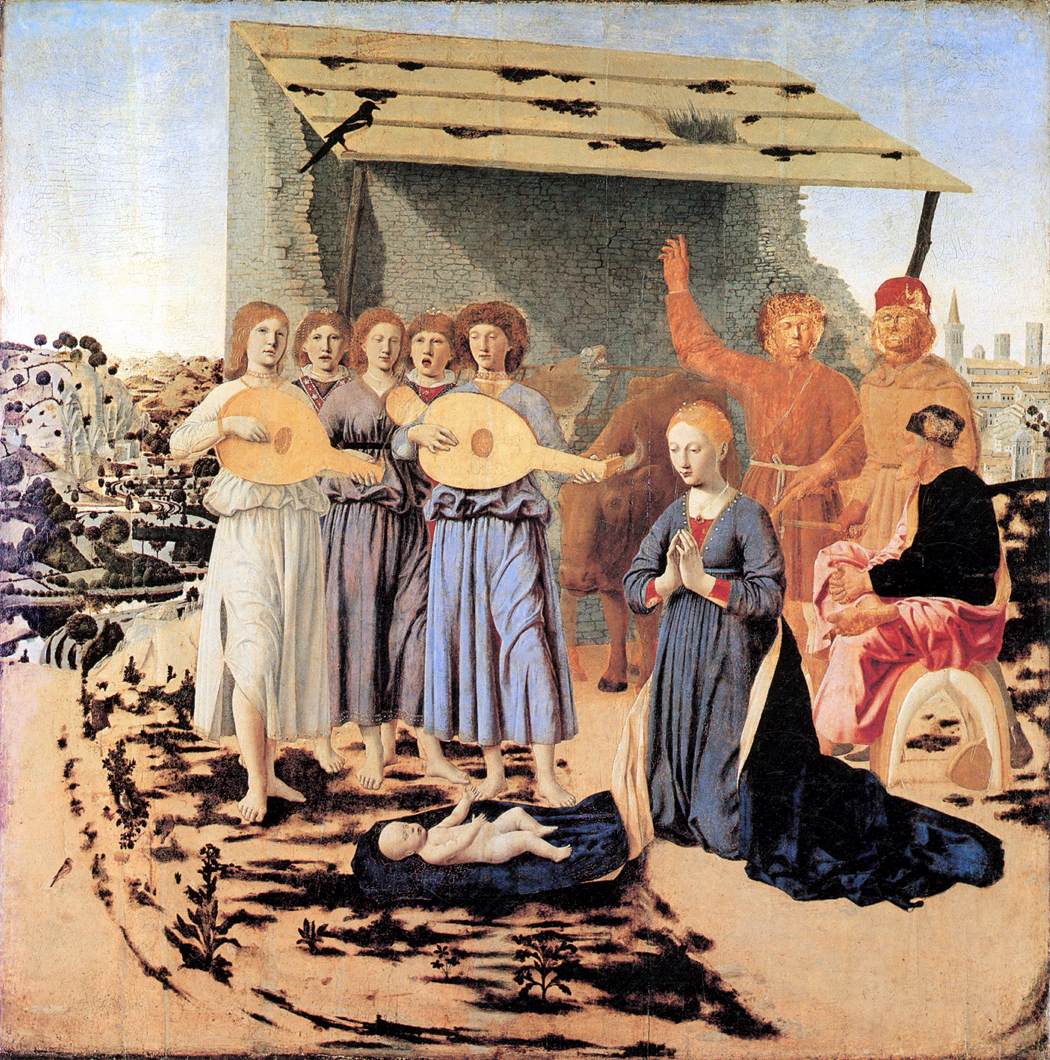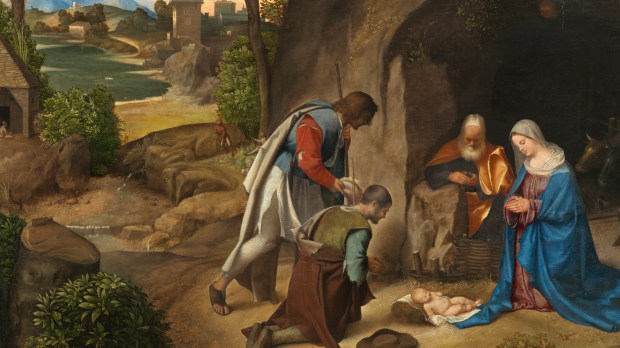Described in the Biblical gospels of Luke and Matthew, the birth of Jesus has inspired many great artists throughout history. Some of the most moving portraits of the Nativity were crafted during the Renaissance, when artists focused on naturalistic, life-like portraits of both people and landscapes. Here are some of the most beautiful depictions of the Nativity from the Renaissance era.
Sandro Botticelli, Nativity of Jesus, (1473-1475)
In this portrait, Sandro Botticelli follows the descriptions provided by St. Bridget of Sweden. Mary and her husband Joseph are sitting in adoration of newborn Jesus. Ox and ass are located behind a manger of intricately woven branches. Botticelli added some additional figures on top of those described by St. Bridget: a young John the Baptist, located to the right of Jesus, and an angel singing from a song book towards a group of shepherds approaching from the left.
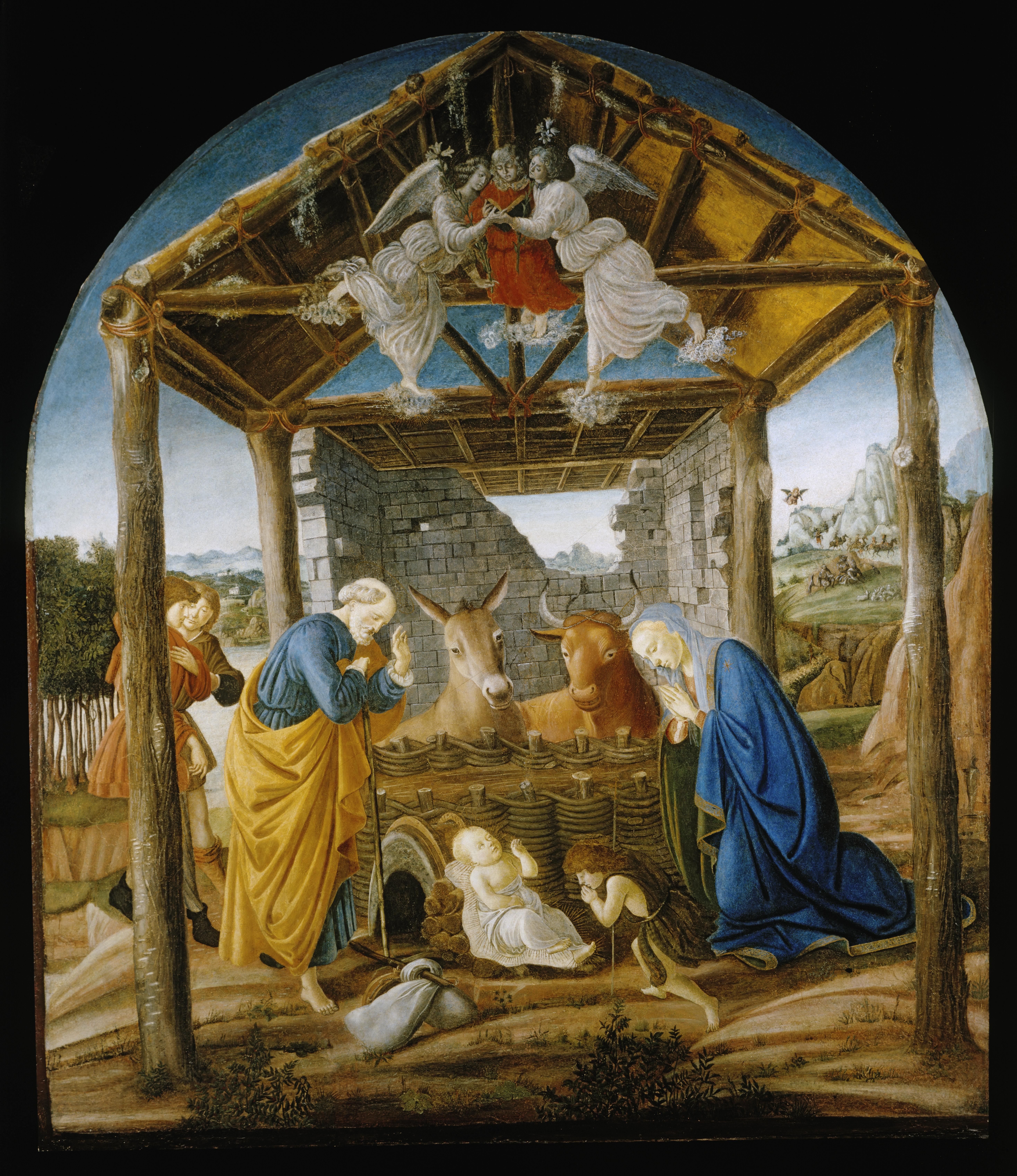
Filippo Lippi, Adoration with St. Vincent Ferrer (1455-1466)
St. Vincent Ferrer, a Dominican preacher who supported Pope Clement VII during the Western Schism of the Catholic Church, was canonized in 1455 and became a symbol of Dominican faith. In this portrait from the same year, Fillipo Lippi features one of the visions popularized by St. Vincent Ferrer, that of Jesus contained within an almond-shaped beam of light. Lippi places Jesus at the center of the composition, surrounded by Mary and a bearded Joseph. On their left, a beautiful and youthful Saint George stands in adoration of Jesus. St. Vincent Ferrer appears to the right of the family, holding an open book in his right hand and looking up at the image of Jesus inscribed into the beam of light.
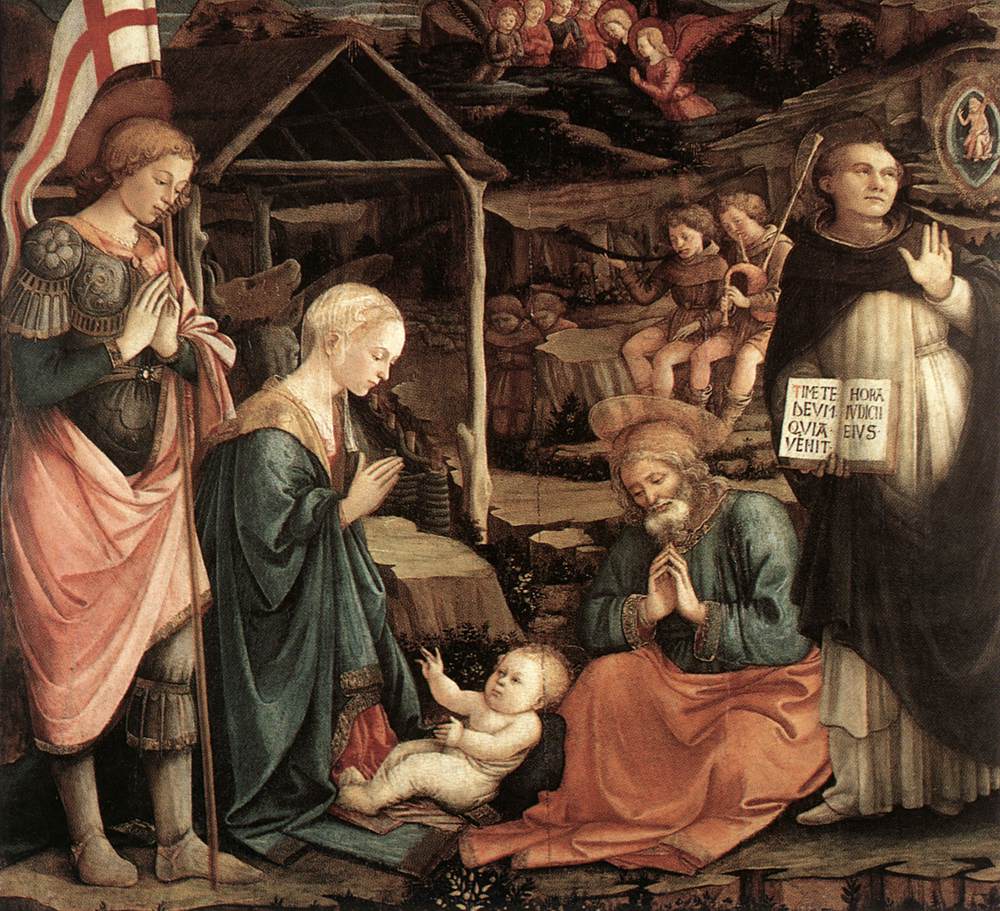
Giorgione, Adoration of the Shepherds, (1500-1510)
After a long and heated debate, most art historians now agree in attributing this16th-century oil on panel to Giorgione–even if some believe it was partly completed by Titian. A dramatic tension was achieved by juxtaposing the dark light of the grotto, on the left of the painting, with the bright and serene landscape on the left. Jesus, Joseph and Mary stand just outside the grotto, greeted by two kneeling shepherds who add an overall sense of movement to the composition.
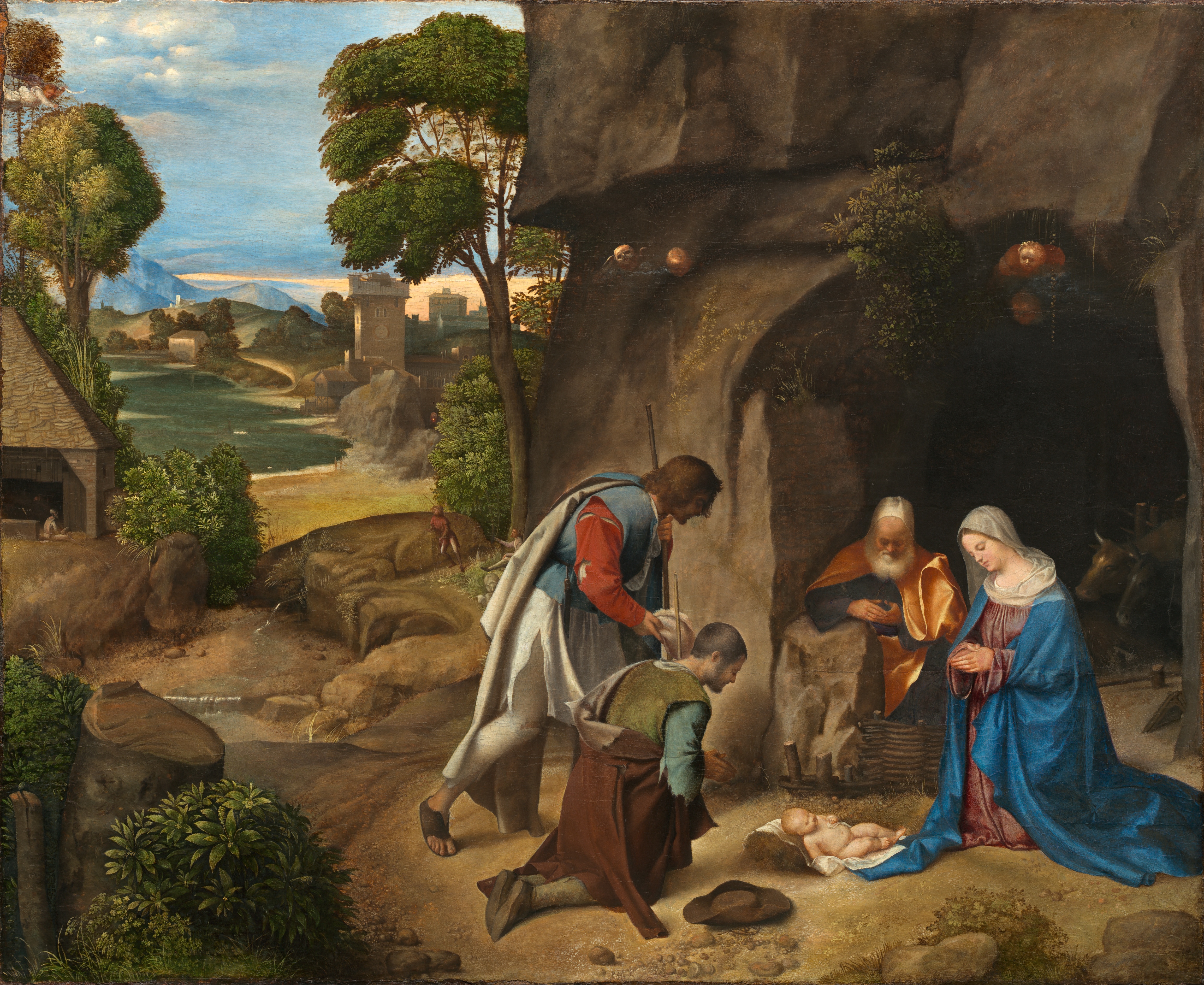
Caravaggio, Nativity with Saint Francis and Saint Lawrence, 1609
An aura of mystery surrounds this stunning portrait of the Nativity by Caravaggio. The painting disappeared in the 1960s and according to some theories, it was stolen by the Mafia and eaten by hogs. But others believe the painting is alive and well may soon reappear, perhaps just before Christmas. Completed in 1609 after a commision of the Company of St. Francis, a Franciscan order based in Palermo, Sicily, the “Nativity With Saints Lawrence and Francis” is striking for its lifelike depiction of human emotions, the dramatic use of light and the tension contained in the bodies of the characters. At the center we find Mary, sitting on the floor — a symbol of her humility–overlooking newborn Jesus. Joseph stands on her left, surrounded by Saint Francis, wearing his Franciscan cloak, and St. Lawrence. The painting was stolen in 1969 from his home in the Oratory of Saint Lawrence where it had been preserved for the previous four hundred years and is yet to be found.
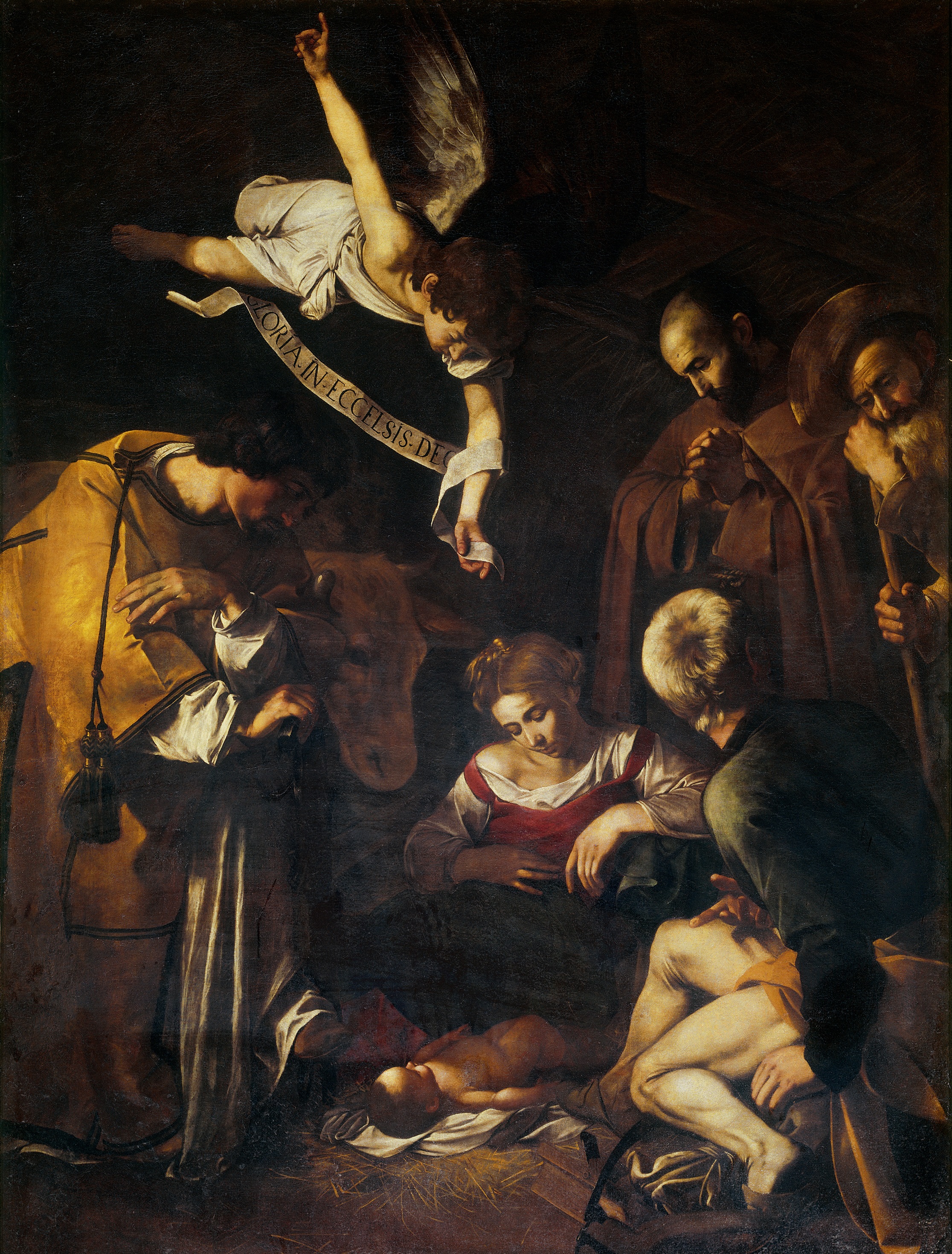
Piero della Francesca, Nativity, (1470-1475)
One of the final works of Piero della Francesca, this Nativity shows how the Italian master was influenced by his Flemish contemporaries. Mary stands in adoration before newly born Jesus, laid on her cloak. A group of music-playing angels is welcoming the newborn while an ox and donkey stand in the background. The realism of Joseph and the two animals as well as the detail of the miniature city in the background–where even tiny windows are made visible–suggest that Piero della Francesca was influenced by Flemish style. The missing patches of color are believed to be a result of overcleaning rather than a sign of the fact that the panel was never finished.
